The Theft of the Santo Niño's Golden Cross
An India and Esclavo at the Crossroads between Communities
By Nicholas C. Sy
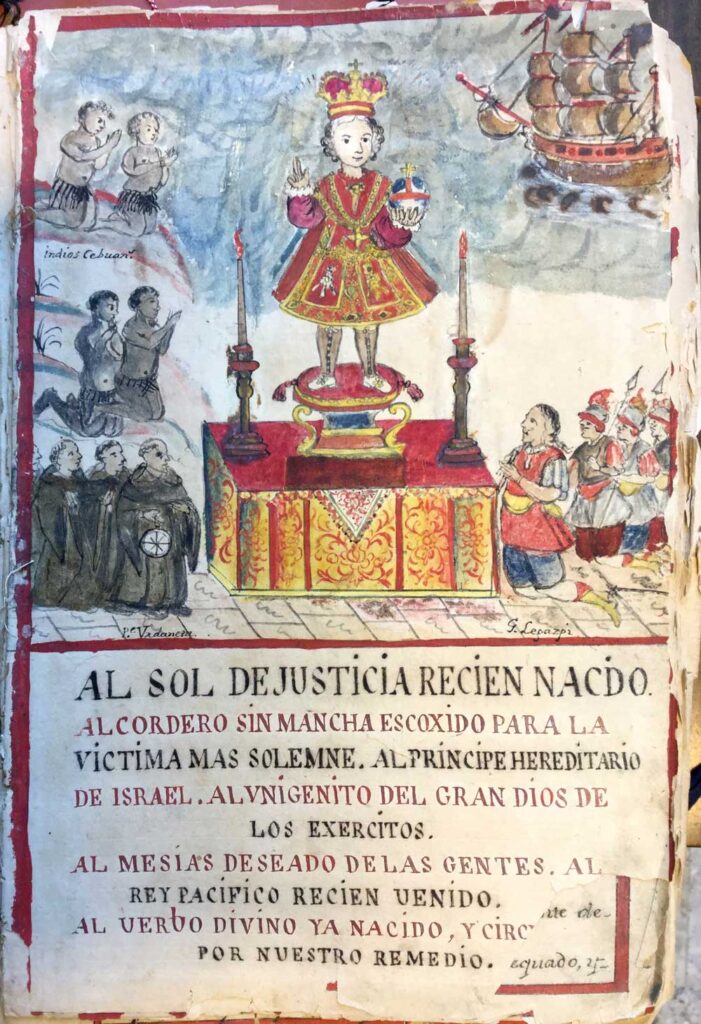
Manuscript of Osario Venerable by Augustin Maria de Castro 1770
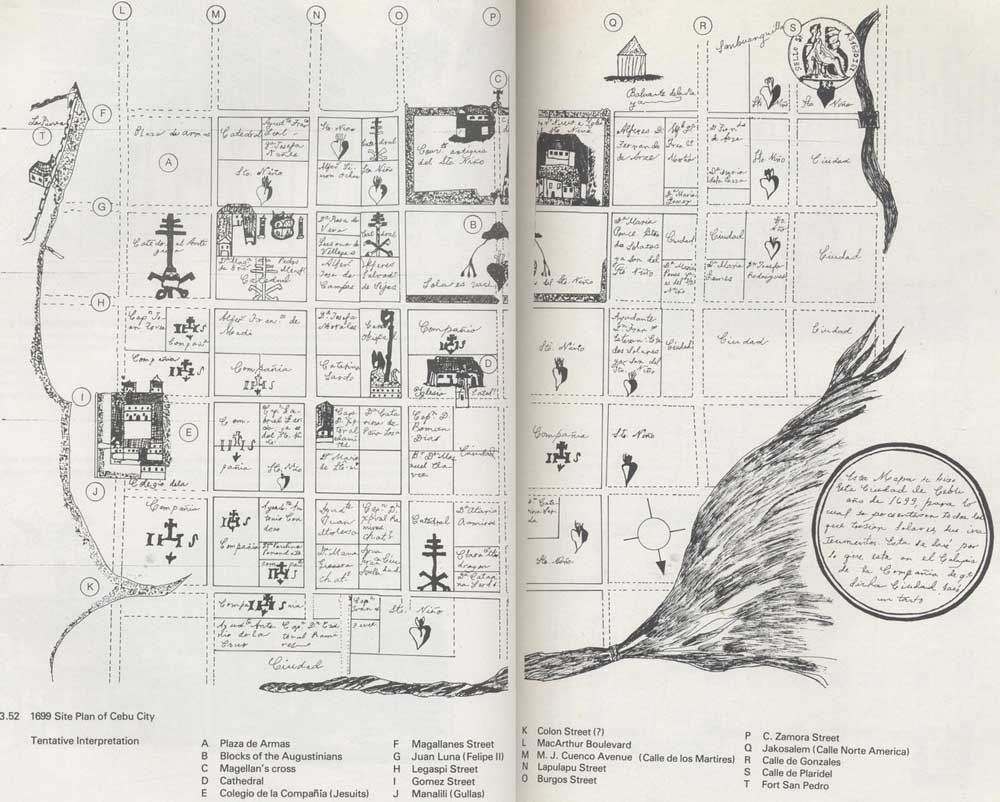
Map and site plan of Cebu City from 1699 which shows the location of Santo Niño Church. Klassen, Winana. “Architecture in the Philippines.” University of San Carlos (1986).
The file’s first set of documents is comprised of the testimonies of Friars Juan Ruiz, Antonio Ximénez, Juan de Montemayor, and Martín de Jesús. The bishop put pressure on each of them to reconstruct the events that led up to the cross’s loss. Their accounts begin in the year 1620 when a chapter meeting was called in Manila.2 The erstwhile prior, one Fray Juan de Tujo, turned over the convent’s treasury to Ximénez along with an inventory of its contents, which both men signed. Later, Montemayor was appointed as the new prior and came to town. Ximénez needed to turnover the treasury to his new superior, but he was in a rush to catch a boat to another island. He asked Ruiz to take over. Ruiz and Montemayor stared at the treasury’s contents and vaguely realized that something was missing. But because they could not pinpoint what exactly was missing, they were unsure whether it was important. They chose not to report it. This status quo remained, until one day the bishop’s agent, Fray Juan de Ricovayo, dropped in for the feast of the Santo Niño and wanted to see the icon’s jewels. The very next day he and the bishop launched an investigation into the disappearance of the Santo Niño’s cross. Ruiz was called-in first on 29 April 1629 and then Ximénez on 30 April 1629. The convent’s slave Tomás was called in on 2 May 1629 and tortured for his testimony. Then Montemayor was summoned followed by Jesús, both on 4 May 1629.
Ruiz’s, Ximénez’s and Montemayor’s testimonies were exercises in self-exculpation. Each missionary blamed one of the others for negligence or for giving vague instructions. Montemayor played the biggest victim. He claimed not to have even known that the statuette had jewelry before he became prior. When he found out and suspected something was missing, he was plagued with indecision. The inventory told him that there should have been “an enameled golden cross found with the child.3
But “almost all of the [other crosses that the Santo Niño] had were made of gold and enameled.”4 When he went to consult Ximénez, the latter accused him of being a pest. Montemayor said that he had “always feared”5that this day would come when “the cross has not turned up and the slaves have run away and revolted and the service and the work of the church has been disturbed.”6 In short, he pleaded for the bishop’s empathy. It was a loss that had happened (he alleged) before his tenure as prior.
Montemayor’s tone stood in contrast with the tone adopted by brother Martín de Jesús. Jesús could not be bothered. He had been implicated for lending the treasury’s key to one of the convent’s enslaved servants, but as far as he was concerned the fault was structural: “they had made him so busy that he could not attend to everything” 7 What was he supposed to have done?—he seemed to ask his interrogator.
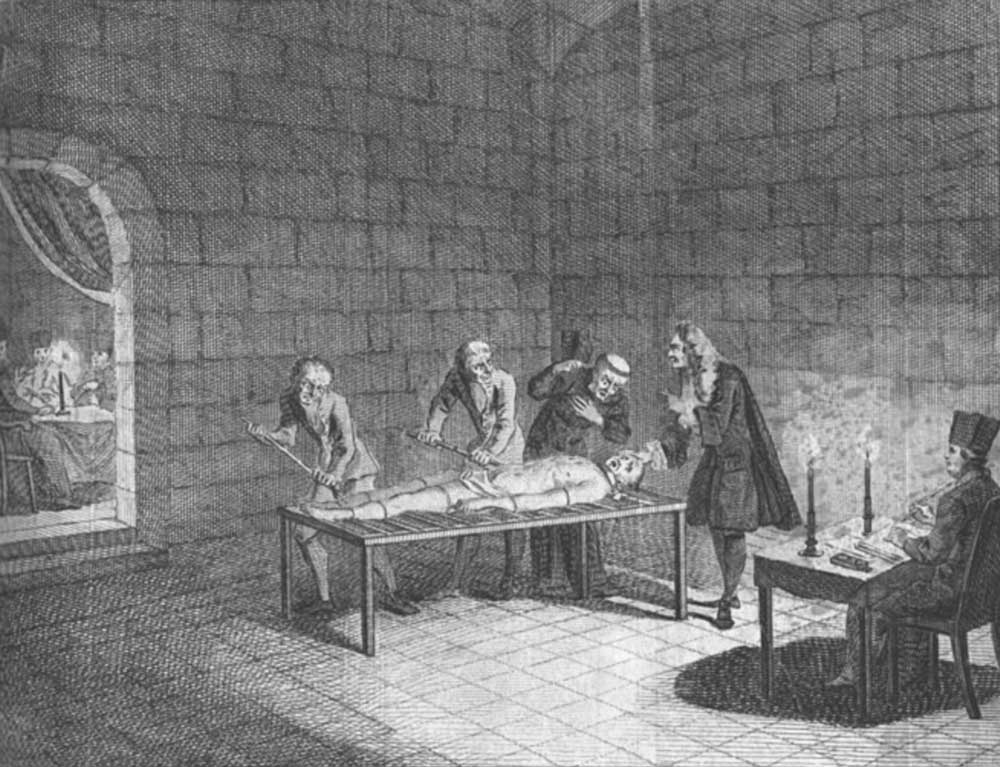
Boitard delin Truchy Seu Ip. The Sufferings of John Coustos for Freemasonry and for his refusing to turn Roman Catholic, in the Inquisition at Lisbon; Where he was sentenc’d, during Four Years, to the Galley; and afterwards releas’d from thence by the gracious Interposition of his present Majesty King George II. London : Printed by W. Strahan, for the Author, 1746.
The file’s second set of documents is comprised of the aforementioned testimony of Tomás, again dated 2 May 1625. Rodríguez transcribes his surname as “Sareman,”8although this is less than self-evident from the manuscript’s erratic handwriting. Tomás was the sacristan—a post that might have been assigned to slaves, as suggested by another case from 1732.9He was referred to as “negro,”10but was also described as being assigned to the same sleeping quarters as the “other Camarines servants.”11This suggests that he hailed from the Bikol region and, given his designation as black, was possibly a person of indigenous Agta rather than African descent. His name was mentioned from day one of the investigation which, again, was roughly twenty-four hours after the bishop’s agent first noticed that the jewelry was missing. The immediacy of this implication suggests that Tomás was already for some reason distrusted. Because he was “vacillating,” he was placed on a torture rack with nine cords that tightened around his flesh (“un potro de tormento con nueve cordeles”)12. . The explicit questions and implicit follow-up questions he was asked placed Tomás at the center of the crime and attempted to squeeze the cross’s location out of him. But, according to his own testimony, Tomás no longer had the cross. He claimed that he initially stole it by taking brother Martín’s key, but then Montemayor’s slave named Jacinto had, in turn, stolen the cross from him and handed it to Isabel with whom, we later learn, Jacinto “lived in sin (en ofensa de dios).”13 Tomás stated that he stole the cross back but, for some undocumented reason, Tomás pawned it to Isabel for six reales.14.
Agency in Absence
READ THE FULL DOCUMENT
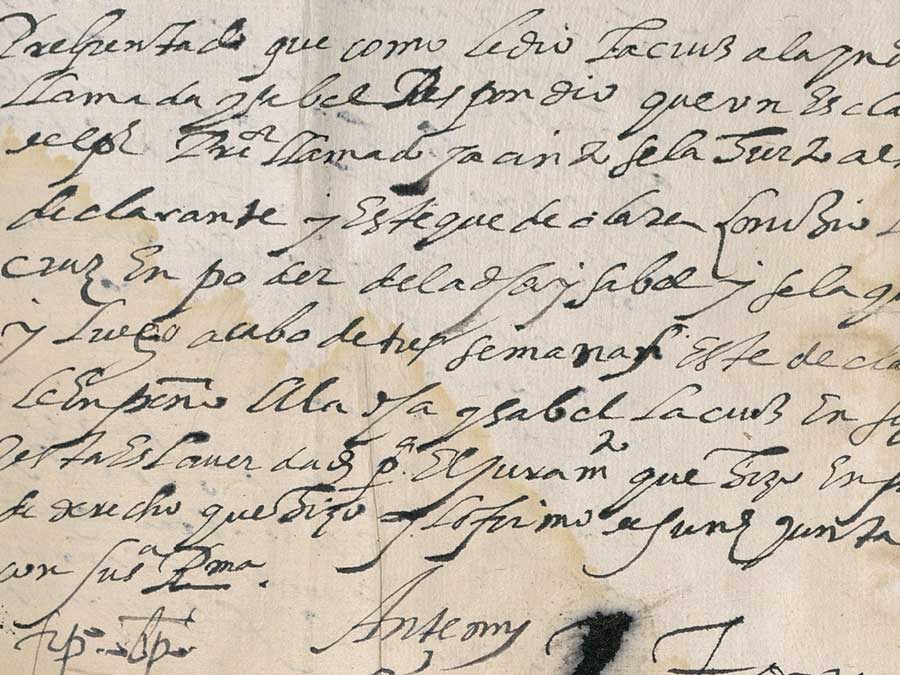
Sobre el robo de la cruz del Santo Niño de Cebú por un sacristán, esclavo del convento. 1625.
On the theft of the cross of the Holy Child of Cebu by a sacristan, a slave of the convent. 1625. (English translation)
16 pages, transcribed and translated
View the full document
Bibliography
Archdiocesan Archives of Nueva Segovia. 1693-1702. Libro de Entierros, box 13, vol. 1, bk 4.
Lilly Library (LL). 1625. Sobre el robo de la cruz del Santo Niño de Cebú por un sacristán, esclavo del convento, 276r-281v (img1-12). Accessed online, October 2023, https://fromthepage.com/1762archive/a-digital-repatriation-of-a-lost-archive-of-the-spanish-pacific-the-library-of-the-convent-of-san-pablo-manila-1762/sobre-el-robo-de-la-cruz-del-santo-nino-de-cebu-por-un-sacristan-esclavo-del-convento-1625/display/33699355
_____. 1639. Certificaciones auténticas del modo con que se halló el Santo Niño de Zebu May 1639, 85r-88v (img1-6). Accessed online, December 2023, https://fromthepage.com/1762archive/a-digital-repatriation-of-a-lost-archive-of-the-spanish-pacific-the-library-of-the-convent-of-san-pablo-manila-1762/certificaciones-autenticas-del-modo-con-que-se-hallo-el-santo-nino-de-zebu-may-1639-vad6896-u-00007-154-163
_____. 1732. Monacillos que lo sean los hijos de los mestizos, 439r-449r (img1-21). Accessed online, October 2023, https://fromthepage.com/1762archive/a-digital-repatriation-of-a-lost-archive-of-the-spanish-pacific-the-library-of-the-convent-of-san-pablo-manila-1762/onedrive-1-9-25-2022-1.
Scott, William Henry. 1991. Slavery in the Spanish Philippines. De La Salle University Press.
Rodríguez, Isacio. OSA.1987. Historia de la Provincia Agustiniana, vol. 19, 149-151. Valladolid: Ediciones Estudio Agustiniano.
VIEW OTHER FEATURED TEXTS
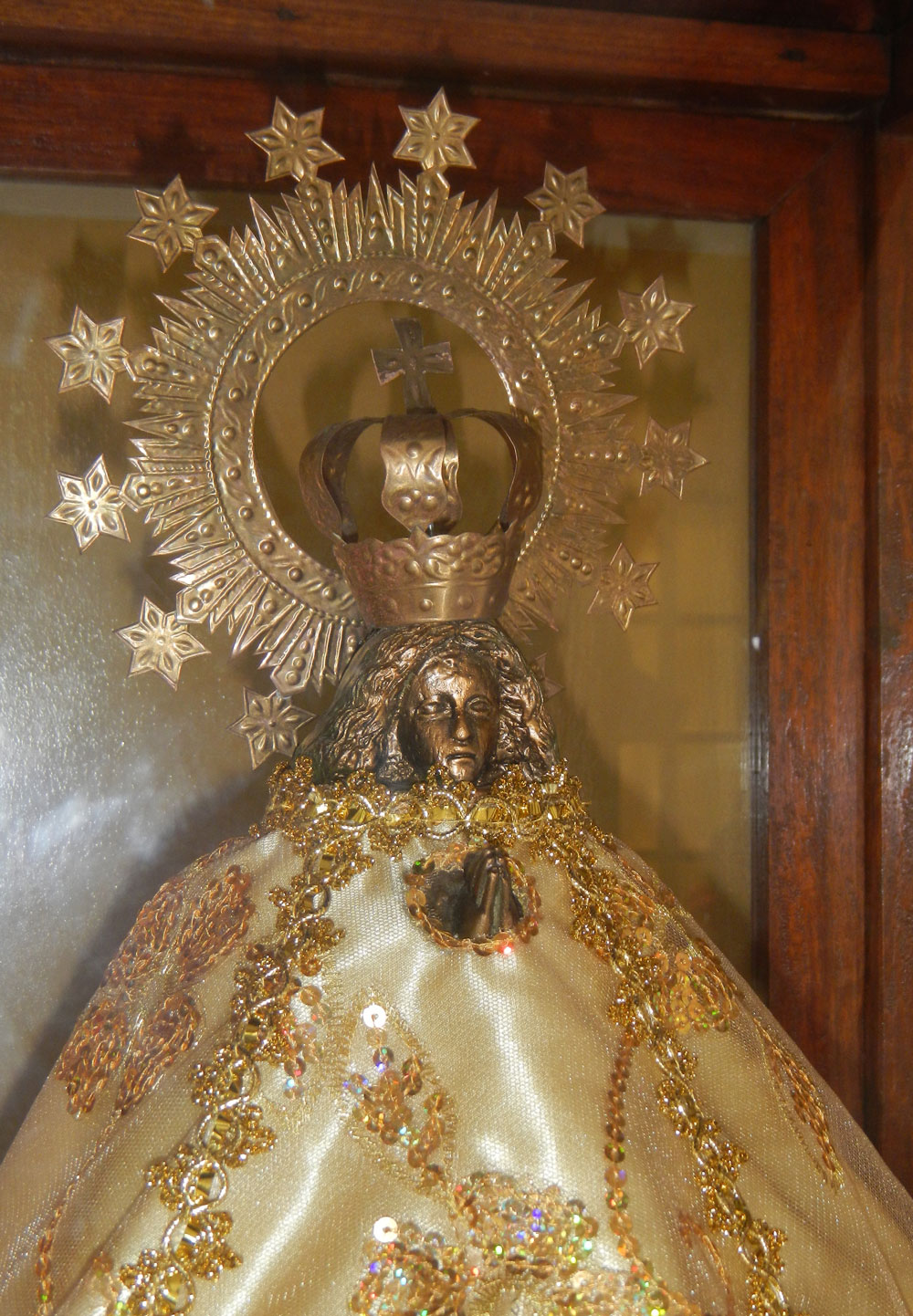
Race, Massacre, and Resurrection in Casaysay
The case at hand is an ecclesiastical investigation that validated a miracle performed by Our Lady of Caysasay, an image of the Immaculate Conception located in Caysasay, near Taal, not far from Manila.
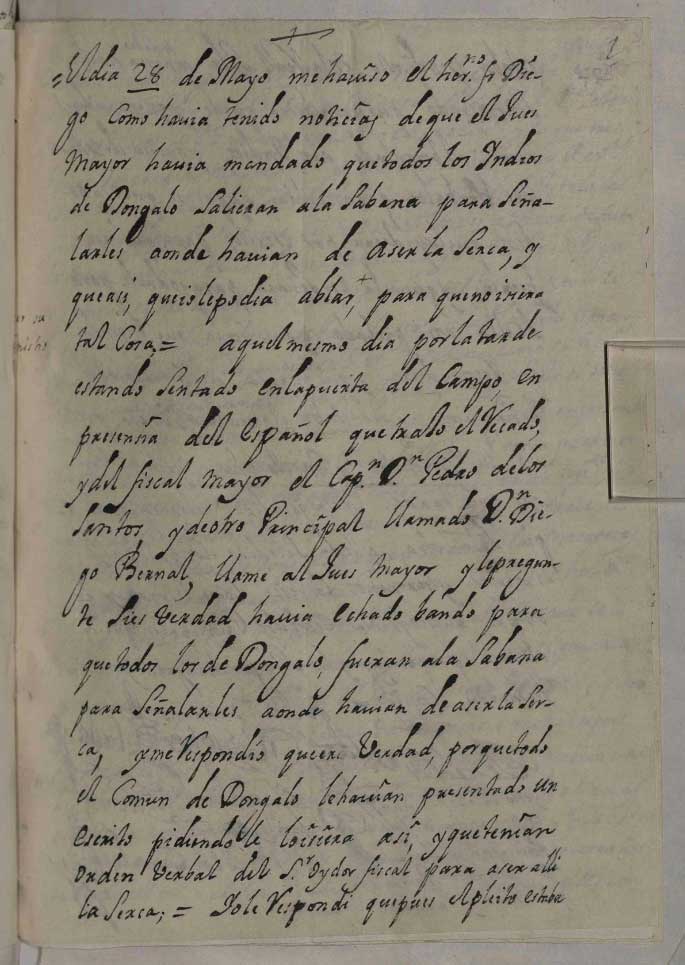
Upheaval and Indigenous Resistance in Dongalo
In May of 1717, a physical skirmish broke out in Dongallo, a town just south of Manila between a group of local principales and Augustinian officials over where the line between their property really was